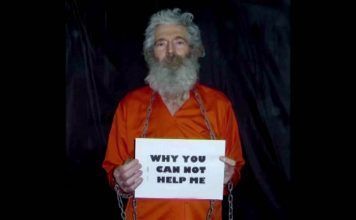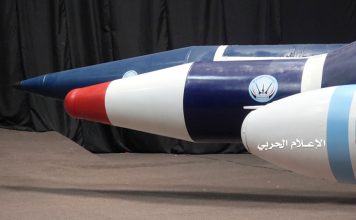By Kayhan Life Staff
Tiles covering 30 square meters of the dome of the 15th century Amir Chakhmaq Mosque (Dahouk Mosque) in Yazd, the capital of the central Yazd province, have fallen off, according to Ahmad Akhundi Ebrahim-Abadi, the director of the province’s Cultural Heritage, Handicrafts and Tourism Organization.
Pictures on social media show the dome missing many original tiles. However, Mr. Ebrahim-Abadi reassured the public that the structure and its foundation had suffered no damage.
[aesop_image img=”https://kayhanlife.com/wp-content/uploads/2023/06/amir-chakhmagh.jpg” panorama=”off” credit=”15th century Amir Chakhmaq Mosque (Dahouk Mosque) in Yazd. KL./” align=”center” lightbox=”on” captionsrc=”custom” captionposition=”left” revealfx=”off” overlay_revealfx=”off”]
“Domes of historical mosques consist of two layers,” Ebrahim-Abadi said. “There is the main structure and there is the decorative layer, which consists of tiles or glazed bricks.”
“The dome of the Amir Chakhmaq Mosque has not been repaired for many years, which is not unusual for historical sites,” Ebrahim-Abadi explained. “Buildings usually show signs of wear and tear after 20 or 30 years, and that is when repairs begin. Amir Chakhmaq Mosque has no structural problems.”
“The technical council has inspected the mosque’s dome,” Ebrahim-Abadi noted. “What has happened is that the decorative tiles covering 30 square meters of the dome have fallen off, and that section needs repair.”
While successive Iranian governments in the past four decades have earmarked massive funds in their annual budgets for the preservation of religious and ideological institutions, they have overlooked the country’s secular cultural heritage. The Islamic Republic has a poor track record in terms of protecting, restoring, and conserving the country’s historical sites.
The Amir Chakhmaq Mosque was built on the orders of Jalal ed-Din Amir Chakhmaq Shami, the governor of Yazd during the Timurid Empire (1370 AD -1507 AD).
The mosque, completed in 1438, is part of the historical Amir Chakhmaq Complex, which also includes a traditional bazaar (market), a Tekyeh (where Shia Muslims gather to mourn Imam Husayn’s martyrdom in the month of Muharram,) two Ab Anbars (water reservoir), and a Zurkhaneh (gym).
The Amir Chakhmaq Mosque was registered on the Iranian National Heritage list in December 1945.
In 2017, UNESCO (the United Nations Educational, Scientific and Cultural Organization) recognized the city of Yazd as a World Heritage Site, a landmark or area with legal protection by an international convention administered by UNESCO.
Majid Olumi, a senior conservator of historical buildings, agrees with Ebrahim-Abadi’s assessment of the damage to the Amir Chakhmaq Mosque.
“Building materials deteriorate with time,” Mr. Alavi said. “Tiles on the side of Amir Chakhmaq Mosque’s dome that have greater exposure to the sun and natural elements have fallen off.”
“The last time the mosque’s dome underwent repair was 45 years ago, and we have the photographs from that era,” Alavi added. “Building materials age, and weaken.”
The public was shocked by pictures published last year showing the grounds of an ancient Sassanid (224 AD-651 AD) Zoroastrian fire temple in Kazerun, in the southeastern province of Fars, used as a parking lot for cars and heavy agricultural machinery.
Several greenhouses were established on the grounds and inside the fire temple in 2017.
In comments reported by the Iranian Students News Agency (ISNA) in March, Siavash Ariya, a researcher, and national heritage activist, said that despite assurances from the officials of the Fars Province Cultural Heritage, Handicrafts and Tourism Organization, nothing was done to protect the Sassanid era fire temple.
“I had spoken to officials of the Fars Province Cultural Heritage, Handicrafts and Tourism Organization about protecting these structures from the Sassanid era and had received assurances in that regard,” Mr. Ariya said.
“However, not only has no step been taken to define the boundaries of the fire temple in Kazerun in the past five and a half years and protect its grounds, but astonishingly, more greenhouses have been set up on its grounds and the building,” Ariya lamented.
[aesop_image img=”https://kayhanlife.com/wp-content/uploads/2023/06/atashkadeh-kazeroon.jpg” panorama=”off” credit=”The fire temple in Kazerun. KL./” align=”center” lightbox=”on” captionsrc=”custom” captionposition=”left” revealfx=”off” overlay_revealfx=”off”]
“It is sad and disheartening to see the indifference and apathy shown by the Fars Province Cultural Heritage, Handicrafts and Tourism Organization officials,” Ariya added.
Criticizing the installation of electric poles on the grounds of the fire temple, Ariya said: “No one would have violated the sanctity of this historical site if the [officials] had defined the boundaries of the temple.”
“There is not even a single sign near the site informing the public, especially those living in the area, of the structure’s historical significance,” He added.
The fire temple is 10 kilometers southeast of the city of Kazerun. Some scholars believe it was built by Mehr Nersi (Mehrnersin), a renowned vizier (senior official) in the royal Sassanid court of Bahram V (Bahram Gor, reigned from 420 Ad to 438 AD).
Recently, pictures posted on social media showed cracks in the 13th-century AD Iranian poet Saadi Shirazi’s mausoleum caused by subsidence.
Mohammad Reza Hajeri, the spokesperson for the Islamic Council of Shiraz, the capital of the central province of Fars, recently said: “No repairs or restoration work has been done on Saadi’s mausoleum in 30 to 40 years. The ground and the garden must be rebuilt. Even the ancient door to the mausoleum has not been restored.”
[aesop_image img=”https://kayhanlife.com/wp-content/uploads/2023/06/saadiyeh.jpg” panorama=”off” credit=”Saadi’s mausoleum. KL./” align=”center” lightbox=”on” captionsrc=”custom” captionposition=”left” revealfx=”off” overlay_revealfx=”off”]
One of the most attractive features of the grounds of Saadi’s mausoleum was a shallow pool with various fish. Locals believed the pool’s water was sacred. However, draught has not spared this magical site. Dustheaps have replaced the water and the fish.
Pictures shared on social media and in local newspapers in Shiraz, showing Saeed’s mausoleum in a state of disrepair, sparked public outcry.
Subsequently, Moayed Mohsennejad, the director of communication for Fars Province Cultural Heritage, Handicrafts and Tourism Organization, said a scientific inspection conducted in the past 16 months to determine the extent of the damage to Saadi’s mausoleum showed that the structure’s foundation needed to be reinforced.
Mr. Mohsennejad also said $18,000 was earmarked in the 2023-24 budget for repairing Saadi’s mausoleum.
“The current budget of $18,000 will not be enough,” Mohsennejad argued. “Despite being home to 15 historical sites, Fars Province is not among the top three provinces receiving a budget for repair and restoration.”
“The best solution is to form a board of trustees who would use the revenue generated from people visiting Saadi and Hafez [1325-1390] mausoleums to repair and restore these sites,” Mohsennejad noted. “The income from these sites can solve many problems.”
“Setting up a board of trustees would also allow the city council and mayor’s office to take an active role in the project because, under the current law, city council and the mayor’s office cannot deal with government properties,” Mohsennejad added.”











